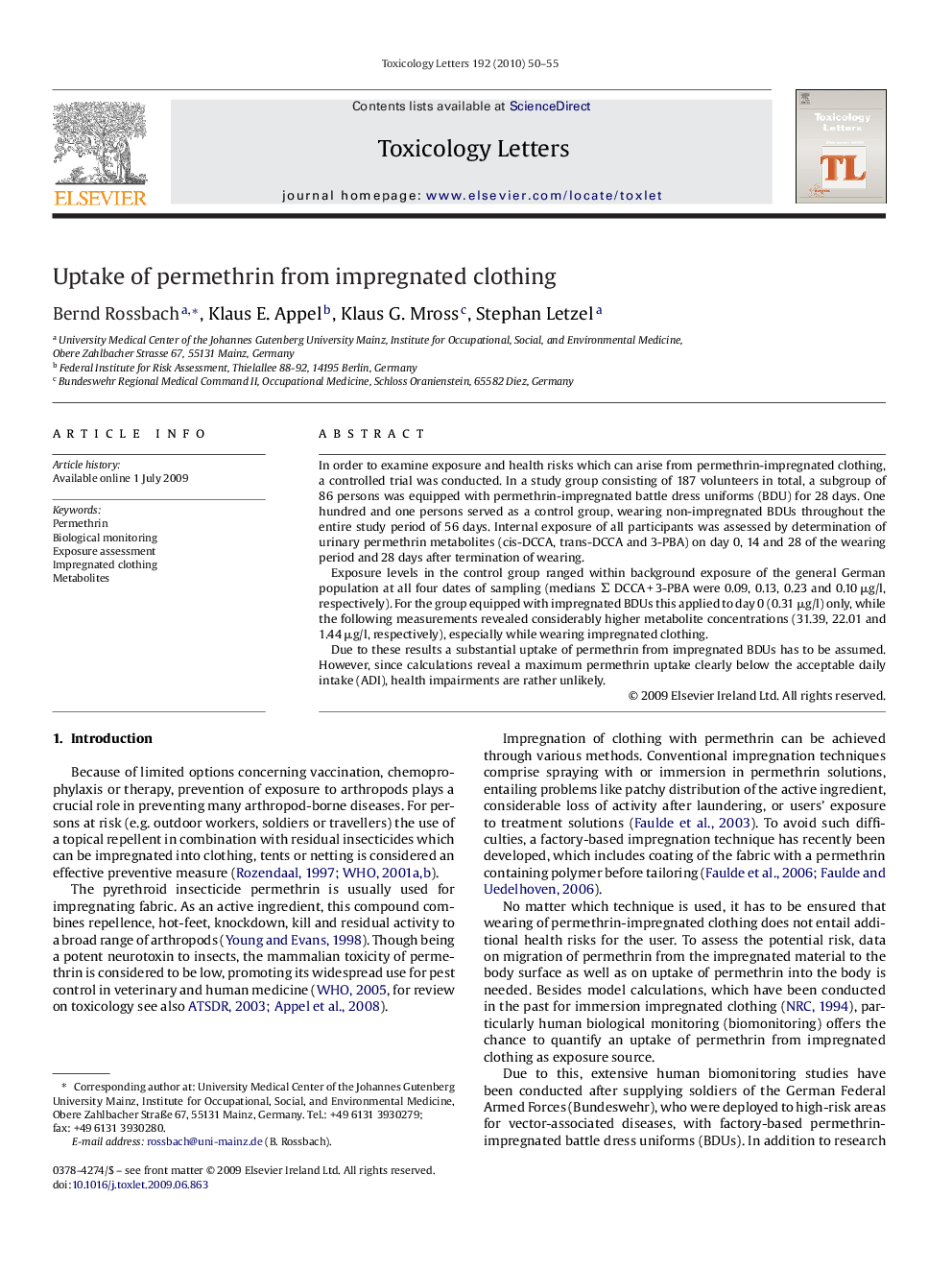| Article ID | Journal | Published Year | Pages | File Type |
|---|---|---|---|---|
| 2600736 | Toxicology Letters | 2010 | 6 Pages |
In order to examine exposure and health risks which can arise from permethrin-impregnated clothing, a controlled trial was conducted. In a study group consisting of 187 volunteers in total, a subgroup of 86 persons was equipped with permethrin-impregnated battle dress uniforms (BDU) for 28 days. One hundred and one persons served as a control group, wearing non-impregnated BDUs throughout the entire study period of 56 days. Internal exposure of all participants was assessed by determination of urinary permethrin metabolites (cis-DCCA, trans-DCCA and 3-PBA) on day 0, 14 and 28 of the wearing period and 28 days after termination of wearing.Exposure levels in the control group ranged within background exposure of the general German population at all four dates of sampling (medians Σ DCCA + 3-PBA were 0.09, 0.13, 0.23 and 0.10 μg/l, respectively). For the group equipped with impregnated BDUs this applied to day 0 (0.31 μg/l) only, while the following measurements revealed considerably higher metabolite concentrations (31.39, 22.01 and 1.44 μg/l, respectively), especially while wearing impregnated clothing.Due to these results a substantial uptake of permethrin from impregnated BDUs has to be assumed. However, since calculations reveal a maximum permethrin uptake clearly below the acceptable daily intake (ADI), health impairments are rather unlikely.
